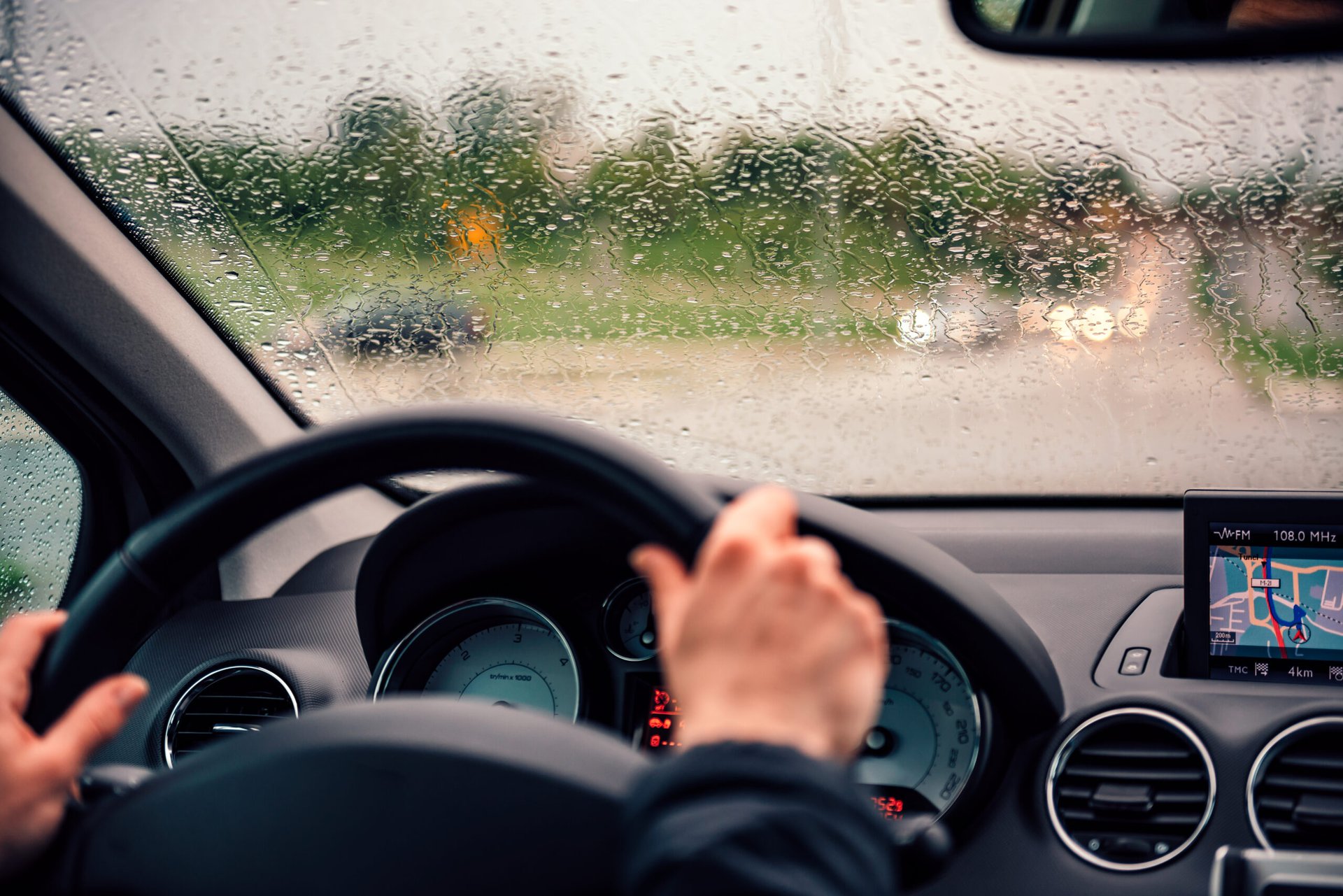
A sudden downpour can make it difficult to see when you are driving. But heavy rain also can obscure the “vision” of your vehicle’s safety system, possibly putting you in danger, recent testing finds.
According to an analysis by AAA, moderate to heavy rain can reduce vehicle safety system performance significantly. In closed-course testing that used simulated rainfall, AAA found that:
- Test vehicles with automatic emergency braking collided with a stopped vehicle 33% of the time when traveling at 35 mph.
- Test vehicles with lane-keeping assistance technology departed from their lane 69% of the time.
AAA notes that vehicle safety systems often are evaluated in ideal operating conditions instead of using the real-world conditions that drivers commonly face.
In a press release, Greg Brannon, AAA’s director of automotive engineering and industry relations, says:
“Vehicle safety systems rely on sensors and cameras to see road markings, other cars, pedestrians and roadway obstacles. So naturally, they are more vulnerable to environmental factors like rain.”
In additional testing, AAA found that a simulated dirty windshield covered with a concentration of bugs, dirt and water did not negatively affect overall safety-system performance.
However, AAA notes that a dirty windshield can still affect safety-system cameras, and the organization urges drivers to keep their windshields clean.
This is not the first time that AAA has uncovered flaws in vehicle safety systems. Earlier testing found that vehicles:
- Struggle to stay in their lanes in moderate traffic, on curved roadways and near busy intersections.
- Fail to stop for pedestrians in many situations, including when people cross in front of a vehicle or a child darts out from between two parked vehicles.
- Hit disabled vehicles or veer too close to other vehicles or guardrails.
AAA says such failures underscore the need for additional fine-tuning of safety systems. For now, AAA recommends that drivers take steps such as:
- Keeping windshields clean
- Avoiding hard braking and sharp turning
- Remaining five to six seconds’ distance behind the vehicle ahead
- Easing off the accelerator — rather than hitting the brakes — when the vehicle starts to hydroplane





Add a Comment
Our Policy: We welcome relevant and respectful comments in order to foster healthy and informative discussions. All other comments may be removed. Comments with links are automatically held for moderation.